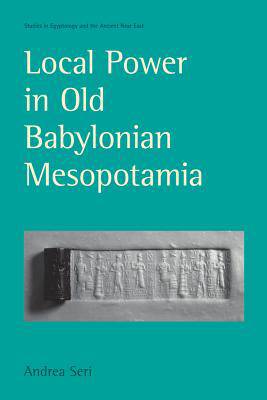
- Afhalen na 1 uur in een winkel met voorraad
- Gratis thuislevering in België vanaf € 30
- Ruim aanbod met 7 miljoen producten
- Afhalen na 1 uur in een winkel met voorraad
- Gratis thuislevering in België vanaf € 30
- Ruim aanbod met 7 miljoen producten
Zoeken
Omschrijving
In this pathbreaking study of local power structures in Old Babylonian Mesopotamia (c.2000-1595 BCE) Seri shows that far from being a monolithic entity that unilaterally made decisions concerning people, water, land, and other resources, the Babylonian state had to deal with local institutions that were not always willing to accept royal decisions passively. He demonstrates that the state was often unable to penetrate deeply into traditional social and economic practices that were controlled by local leaders, as is most apparent in the conflict of jurisdiction related to land distribution. However, the state did surreptitiously co-opt local leaders into the royal domain. The methodology and conclusions of this case study of local authorities in Old Babylonian Mesopotamia will also be useful for those studying other ancient states and complex societies.
Specificaties
Betrokkenen
- Auteur(s):
- Uitgeverij:
Inhoud
- Aantal bladzijden:
- 288
- Taal:
- Engels
- Reeks:
Eigenschappen
- Productcode (EAN):
- 9781908049001
- Verschijningsdatum:
- 30/01/2012
- Uitvoering:
- Paperback
- Formaat:
- Trade paperback (VS)
- Afmetingen:
- 155 mm x 231 mm
- Gewicht:
- 399 g

Alleen bij Standaard Boekhandel
+ 112 punten op je klantenkaart van Standaard Boekhandel
Beoordelingen
We publiceren alleen reviews die voldoen aan de voorwaarden voor reviews. Bekijk onze voorwaarden voor reviews.











